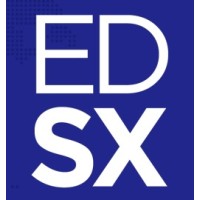Navigating the path to DLT adoption in capital markets necessitates overcoming various hurdles, as our experience developing EDSX demonstrates clearly. Widespread integration of distributed ledger technology faces obstacles that regulators and the financial industry must address for meaningful adoption, such as gaining regulatory acceptance and integrating with existing financial infrastructure.EDSX provides lessons learned on advancing DLT adoption by addressing challenges through collaboration with market participants.
The technology requires further development to be truly scalable, as well standards need to be agreed upon. As we are not certain about the future direction we have inbuilt sufficient flexibility and modularity in our solution both from information and financial point of view. This is the only solution to tackle and make use of uncertainty at this stage.
Sufficient investment will need to develop applications and run implementation programmes. We have brought a pack of partners along to be able to cover the whole spectrum of issues. An industry unaccustomed to cooperation will need to reach agreement on a wide range of challenging issues regarding implementation and the best way to approach this is to speak all current, potential and future participants be they competitors or collaborators. We outline six major areas that need to be addressed before widespread adoption will become feasible.
Scalability
Blockchain technology remains nascent, even if it is developing rapidly.
Questions over scalability and throughput of blockchains are beginning to find answers, with significant improvements over Bitcoin. However, technology must progress further to meet demands of capital markets. Larger data volumes will need to drive widespread adoption or replacement of core capital market functions.
Moreover, people will need to set very high standards for the security, robustness, and performance of blockchains used for major industrial purposes. Integration with existing non-blockchain systems (such as risk management platforms) will also be a requirement for the foreseeable future.
At EDSX we have adopted and ported into the system the best available practices and security concepts. Hence we can say, we have an industrial level system, which still needs testing for transaction loads.
Fitness for regulation
Disrupters in other industries have adopted an ‘act first, seek forgiveness later’ approach to regulation.
Innovations in financial markets, however, require the explicit blessing of regulators well ahead of time. As blockchains integrate into market infrastructure, new regulatory principles may become necessary for consensus protocols that utilize international node networks. For instance, determining responsibility for system integrity will need to be addressed.
A considerable number of aspects of law will also need to reinterpret or change through primary legislation.
Switzerland is an excellent place in this respect as it is at the forefront of legal frame development. These issues include the legal definition of the finality of settlement which presupposes existing market processes and central data sources. Geographic data storage laws will also need to resolve conflicts with distributed ledgers having ledger copies at globally dispersed nodes.
Finally, as the mechanisms currently stand, records are irrevocable once entered into a blockchain, and amendments require changes to all subsequent blocks. This is one of the inherent security features of the blockchain concept. However, this has implications for judicial interventions in the event of disputes or outcomes of other legal proceedings.
Regulators will not accept a mechanism that prevents their lawful intervention.
The design of the system must incorporate mechanisms that allow ownership to change in the absence of compliance from the existing owner. At least for financial instruments, there needs to be a way to enforce a transfer of ownership if the current owner does not adhere to the established terms. Therefore, features are required to facilitate a change in ownership under such circumstances.
EDSX has already allowed for judicial and other government interventions as required by law. So far, several regulatory bodies have expressed interest in blockchain technologies. Because they see the potential to reduce inefficiency and costs, they are ostensibly keen to work with the industry.

Need for a robustness
Short of recording fiat currency on a blockchain (as the Bank of England has already imagined in a research paper), an interoperable cash ledger will require some intermediary step.
Existing cryptocurrencies will need to tackle their inability to be perceived as stable sources of value. There are a number of ways to innovate in this area, but fundamentally, cash would be just another asset class on a ledger.
Commercial enterprises could create specific cryptocurrencies for interbank use (with a permanent par value, and underpinned by near risk-free or escrowed cash holding).
Another, simpler way, is to use existing accounts at banks where participants deposit liquidity for trading in segregated accounts, with changes to the cash ledger reflected on the balance in their trading account.
Standards, supervision and control
Certain design points require industry alignment. Systems must either be completely open like Bitcoin or use permission-based access like EDSX. Principles for suitability in interacting with the ledger are also crucial. Interoperability between different networks is important too. Networks may run different consensus protocols. Safeguards against coding errors are vital to prevent unforeseen knock-on effects, particularly with smart contracts.
These will all be important to agree and enshrine in the initial scoping of new systems and standards for interoperability.
We will need clear agreement on how blockchains will be managed and improved once they are live. This would involve governance processes, update approvals, roles and responsibilities, and so on.
Operational risks and transition risks
Operational risks come into play through the adoption of new technologies, either by running parallel infrastructures whilst disruptive solutions grow, or from more substantive ‘lift and shift’ migrations. A significant amount of work will need to go into minimizing these operational risks. The risk of technical failure during implementation will require participants to be able to recover quickly, or be able to revert to the traditional ecosystem as a fallback.
EDSX maintains a centralized inhouse queue (and parallel copies of it) for all transactions made on its platform as a fall-back scenario.
Managing identity and confidentiality
Anonymity is a critical requirement for many processes in capital markets. Cryptography could go a long way in protecting anonymity in a blockchain.
However, it will require meticulous key management records, maintained separately from the blockchain for each participant, to decrypt and reference back the entries they hold an interest in.
Furthermore, the ability to reveal selective information to counterparties for credit assurance, for instance, makes it extremely difficult to prevent errors that result in major data breaches. And overarching all these considerations is the question of how to link cryptographic identities to real world identities.
Some people envisage Know Your Customer (KYC) assessment to be a responsibility of the validation nodes in a permissioned network. Others imagine a more far-reaching change, where they offer identity management independently of data validation. In addition, there is a degree to which regulators are likely to require perfect views of unanonymised data in the ledger in order to perform adequate market surveillance and maintain anti-money laundering and anti-terrorist financing processes.

Based in Zug, the platform is fully compliant with all Swiss laws related to financial intermediaries, banking, anti-money laundering, and organized trading facilities. Among its core values, there are innovative solutions through blockchain technology, which ensures security and liquidity.
EDSX is the first platform in Europe with primary and secondary markets for both institutional and retails. EDSX is a pioneering platform that employs the world’s leading technology to globally list security tokens in both primary and secondary markets, listing digital securities of real financial instruments to the public with a decentralized peer-to-peer exchange. Our goal is to fully engage every aspect of the financial revolution.
Do you have a question for us?
Send your query here:
[email protected]

